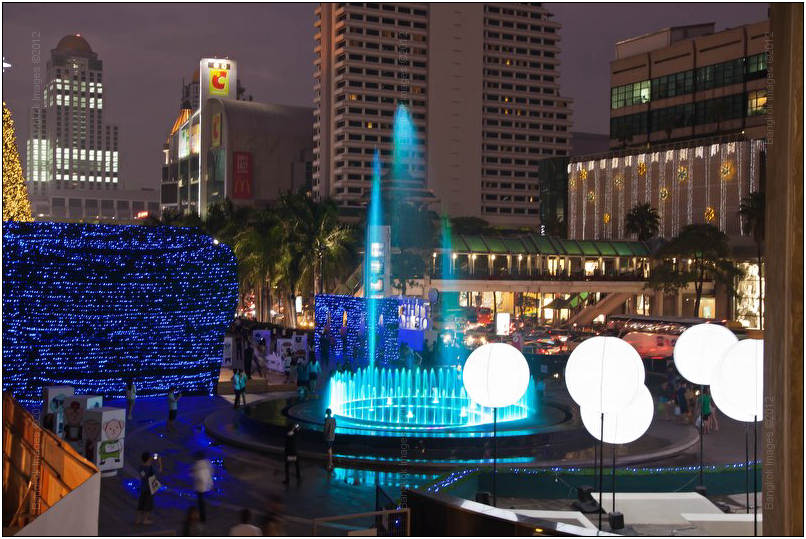Purpose Of A Viewfinder/Bangkok Through Khun Klit’s Eyes/Shoot With A Purpose

Quick Click Links
Purpose Of A Viewfinder Bangkok Through Khun Klits Eyes Shoot With A Purpose Photography News of Interest
Readers Submissions Readers Questions A Snapshot of Bangkok Images Month in Review Infocus Blog, Thailand Photo Stories by Dana
Purpose Of A Viewfinder *menu

Canon 5d Mark II, 16-35mm F2.8L @F8 1/250th 35mm ISO 100
This isolated view doesn’t show the old car on the right, the bright scene to the left, and so much more. I feel fortunate to have selected the gem from a basket of rotten eggs.
In the world of modern photography we have many more camera types than ever before from which to choose. For the purpose of this article I’m going to focus on modern DSLR (digital single lens reflex) cameras and the viewfinder
we all know and love, the pentaprism optical viewfinder. Perched high atop the body it's hard to miss. Supported by a complex arrangement of mirrors, gears, springs, and ground glass with the better bodies boasting specifications like “100% viewfinder coverage” and “0.71x magnification“ you’re left with little doubt that the manufacturers put a great deal of thought, expense and never ending research into that one specific feature. The viewfinder.
So you ask, “is it really as important as they make it out to be?" In a word YES. Even more so. It’s through this viewfinder that you not only “see” and compose your compositions, but you also
monitor and change your cameras settings. Every new generation of DSLRs wouldn’t be complete without the newest viewfinder functions promising to revolutionize photography and rock your world.
As each new workshop class filters through with each student armed with the latest in DSLR technology, I continue to be challenged to impress upon them the two most important functions of a viewfinder. To “see” and compose
their compositions, and to “control” their camera. That’s it, to see and control. This is all it takes to be the most awesome photographer. Seeing and controlling.
Let’s talk about controlling first. Among seasoned photographers there’s a running observation we often joke about. An old Leica camera manual had but 16 pages of fairly large print which described every control and feature of the camera
and how to use them. At the very end in big block letters there is the final instruction “PRACTICE UNTIL YOU CAN OPERATE THE CAMERA WITH YOUR EYES CLOSED.” And yes, they were absolutely serious. Compare that
to the modern DSLR manual of several hundred pages in small print, and they recommend you carry it with you.

Canon 5d Mark II, 16-35mm F2.8L @F8 1/200th 16mm ISO 100
See the car on the right and all other undesirable elements? There are many more to each side. By shifting to my left a few paces and refining my angle and bending down I was able to crate the first image in this article and no settle for this one.
Any competent photographer should be able to at least control their basic settings (exposure mode, AF mode, AF point movement / activation, ISO, shutter speed, aperture) with the viewfinder at their eye. A good photographer will be able
to control every function used in their style of photography with the camera at their eye. When experienced photographers take outings with each other it’s well known they’re watching each other’s control of the camera and
subsequently judging each other through the process. There is no denying you can control the camera must faster AND track your shots at the same time ONLY by controlling your camera through the viewfinder.
If you’re reading this article and cannot yet do this, then I’d recommend putting your camera manual and camera on the table in front of you and practicing 10-15 minutes at a time until you can. This is a non-negotiable vital skill every
experienced photographer must have. Before every shoot spend 5-10 minutes with the camera to your eye manipulating the controls you know you’ll be using that day.
Camera control aside, it’s probably 100x more important to be able to '”see” through your viewfinder than control. And without a doubt it’s the single most important thing for me to get across to my workshop
students. During the course of a workshop I’ll talk and put out books and books of information verbally, we’ll discuss this information, and then the workshop takes a sudden left turn where I stop talking and the student starts thinking
for themselves. At this point I observe and advise as necessary.
In this spirit I’ll also teach through example. For instance, I’ll make it a point to sit down somewhere odd with my own camera and take a big chunk of time looking through my viewfinder. I’m looking for them to ask and then notice
two things:
1. What is he doing.
2. I should be doing that too!

Canon 5d Mark II, Sigma 12-24mm F2.8L @F8 1/400th 24mm ISO 100
There were many scenes which would include this colorful shipping vessel, but this was the only angle which let it loom to the forefront and cut out the pile of garbage to the right.
If you’re a regular reader of this column you’ll remember me mentioning one of the most difficult things for new photographers to do.. is to slow down and really ‘see’ what’s around them. The viewfinder
is there to help you see. If you have a 100% viewfinder, and it’s accurate, then what you see in the viewfinder, edge to edge, will be what you see on your image. If you have a 95% viewfinder, then your resulting image will have an extra
5% on all sides. Professionals far prefer 100% viewfinders because accuracy is vital to our clients. It’s not professional to cut off someone’s feet, or a hand, or the top of their head.
Viewfinders also accomplish another function seldom thought about. They isolate you from the entire scene except for the part you can see. They become like a director's loupe in that they frame your composition on all four sides allowing you to concentrate
only on that portion of the skyline, the room, a church, or whatever. As you move your viewfinder you’ll start to notice compositions you hadn’t previously considered. Isolating a portion of a scene (framing) that
you will subsequently capture as an image is the entire creative purpose of the viewfinder. With practice you’ll learn to use your eyes alone to isolate compositions, but it’s always helpful to use the viewfinder to see the composition
you’re considering.
As you isolate the scene with the viewfinder, if you watch carefully, you’ll also see instances when you’re isolating the direction of the light as well.

Canon 5d Mark II, 16-35mm F2.8L @F8 1/400th 20mm ISO 100
A wider view in this case isn’t as intimate of a scene, but the view is compelling.
There are times when you come upon a scene, throw the camera to your eye, and then snap a picture and this works. Never underestimate shots that come upon you quickly. But if you use your viewfinder to break down an area, whether it be certain locations
for street shooting, different areas in the room for portraits (where the furniture, door openings, etc in the room work for you), and especially for landscapes.. then you’re practically guaranteed to see more and better compositions. And
of course, the more you practice these methods the faster you’ll be able to accomplish them in real time while in the field.
To summarize: Using the viewfinder to isolate the scene will allow you to see different subjects, colors, light, scenes, moods, textures, and much more. Every possible compositional element comes into play including anticipated post processing and even
anticipated movement within the scene.

Canon 5d Mark II, 16-35mm F2.8L @F8 1/250th 22mm ISO 100
This has become one of my classic shots from the boatyard. When a ship is being winched onto the tracks you can see the cables, the pulleys, the W forming the cable runs, and the ship centered in the frame looms powerful even t5hough it’s far away. If the light is right sunlight will gleam off the pulleys and parts of the cable. I love these compositions.
Taking the time to carefully analyze the scene through your viewfinder will allow compositions you’d otherwise never see. It’s all about practice and training yourself to see. It’s commonly called “having the eye.” But eyes can be developed and for most part they are developed. They’re developed through practice and repetition. As you come upon a shooting location try to arrive far enough in advance so you can sit there for a 5-10 minutes period studying
the scene through your viewfinder. Study in an organized manner which is really material for another article. Have a mental list of the common things you’ll be looking for, but leave your mind open for the uncommon. And all the while keep
track of the light going on around you, are there clouds and if so are they moving and in what direction, time of day, and whatever else affects the light in your scene.
The viewfinder is a powerful tool. Professionals are long accustomed to certain types of viewfinders and focusing screens and don’t really care for much else. A good bright viewfinder such as those found in full frame DSLRs are a joy to work with,
while the tunnel vision like extra-small versions found in crop framed DSLRs become irritating and slow in comparison. Once you grow accustomed to seeing certain information in certain locations in your viewfinder nothing else will do.
A viewfinder is like a magic tool which allows you to see things others can’t. They’re either small and irritating or large and bright. They contain vital information. With patience viewfinders will talk to you, they’ll share secrets,
they’ll be the difference between an ordinary common image, or a beautiful well planned landscape. Make your viewfinder your best friend and you won’t be sorry you did.
Bangkok Through Khun Klits Eyes *menu
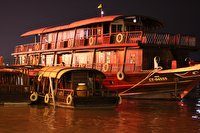
Here are a few photos taken in Bangkok towards the end of December 2011 and February 2012. All of these images were shot in RAW with a Canon EOS 50D and post processed in Lightroom 3. I purchased a Sigma 30mm f/1.4 EX DC HMS lens to use for low light
and night-time photography. I bought this lens to use without a tripod and to get closer to things as my 50mm was just to long on my cropped body.
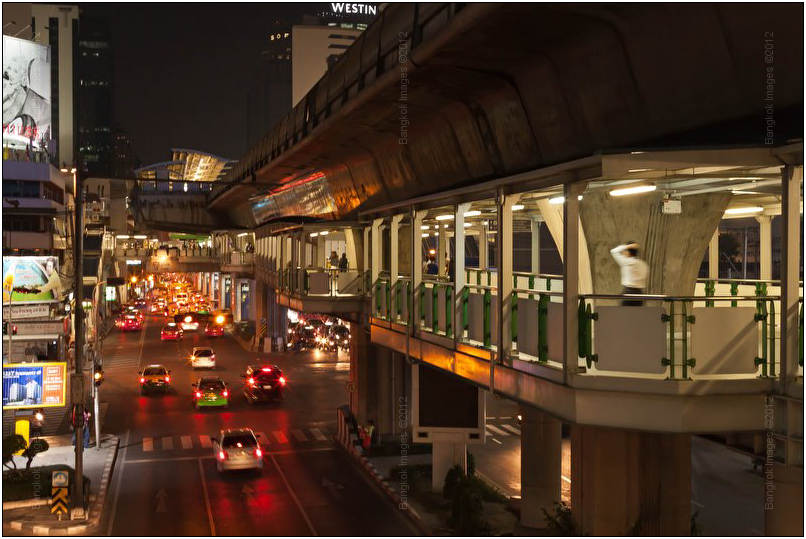
Canon 50D, Sigma 30mm 1/10 sec at f/5,6 ISO 800
The Asoke BTS Skytrain station at nine o'clock in the evening with
the camera resting on a railing to keep it steady.

Canon 50D, Sigma 30mm 1/60 sec at f/4,5 ISO 800
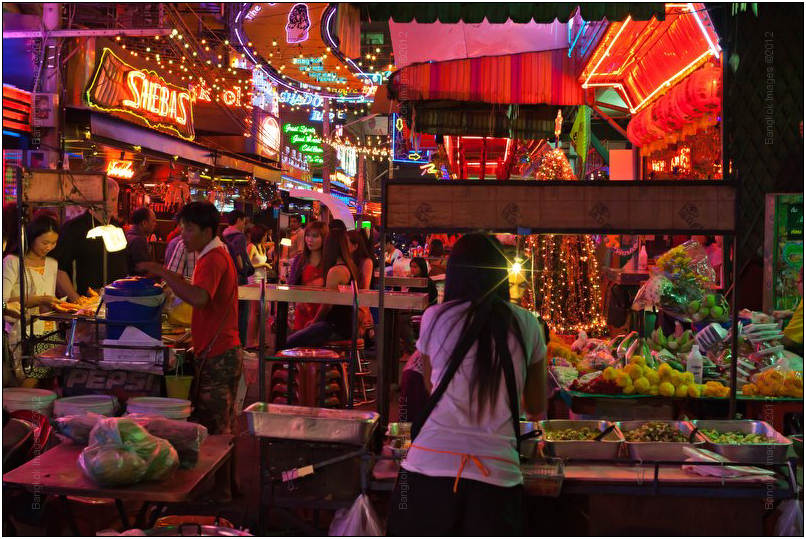
Canon 50D, Sigma 30mm 1/30 sec at f/4,5 ISO 800
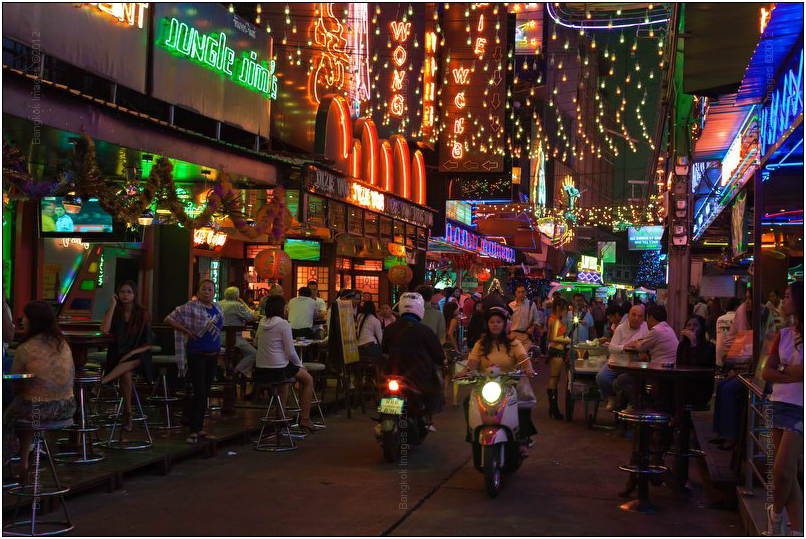
Canon 50D, Sigma 30mm 1/50 sec at f/4,5 ISO 800
These photos were taken on a walk through the Soi Cowboy and all shot in aperture priority mode. I kept my ISO down to 800 to keep the digital noise down. The next job was to reduce the red glow from the people's faces in Lightroom,
I do not know if I went too far.
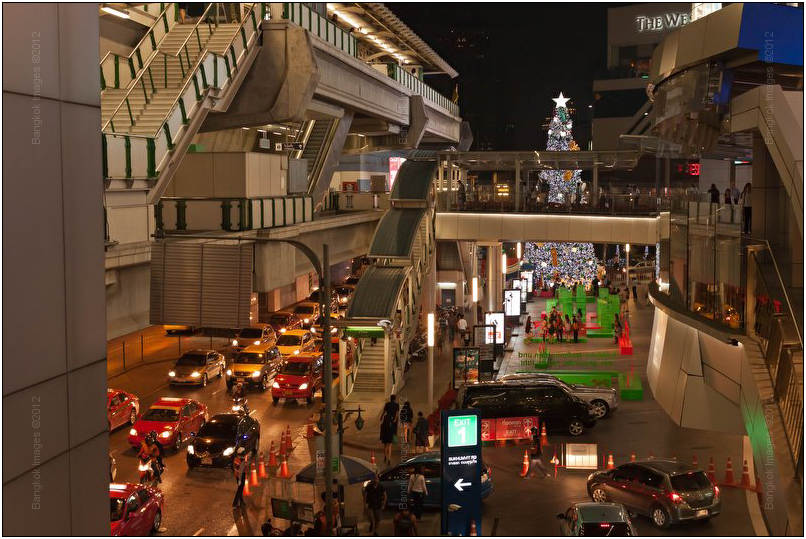
Canon 50D. Sigma 30mm 1/60 sec at f/4,5 ISO 800
The Siam BTS Skytrain station at 21:30.
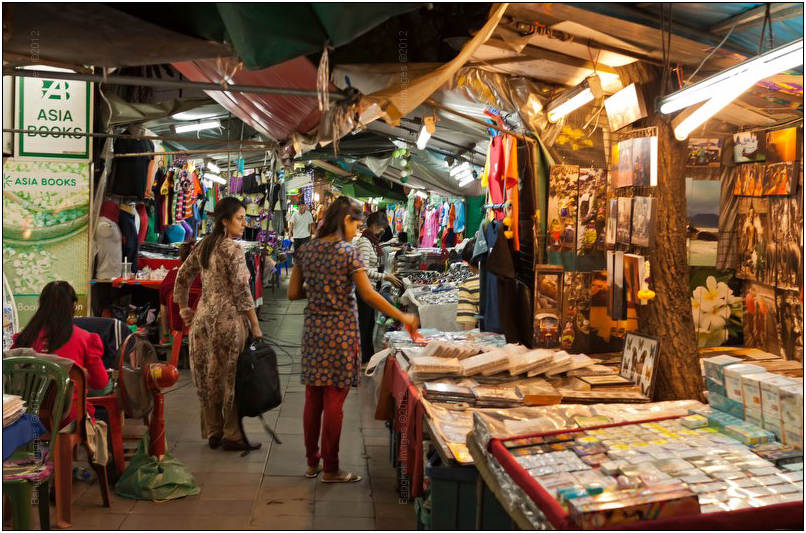
4…
Canon 5D, Sigma 30mm 1/25 sec at f/4,5 ISO 800
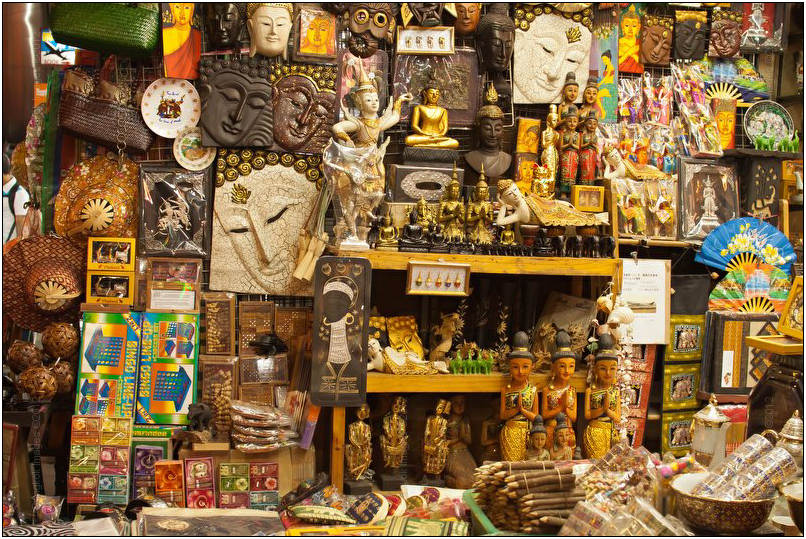
Canon 5D, Sigma 30mm 1/15 sec at f/4,5 ISO 800
Night stalls set up on the Sukhumvit Road selling tourist bric-a-brac.
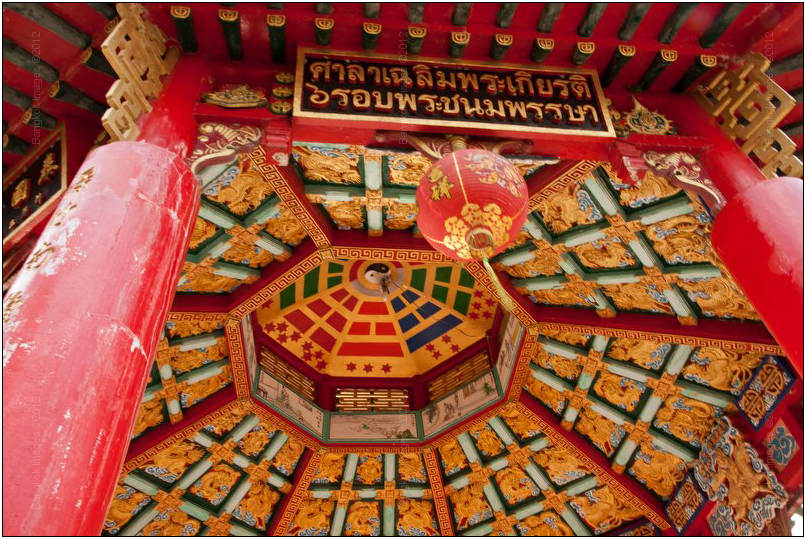
Canon 50D, Canon EF-S15-85mm Lens
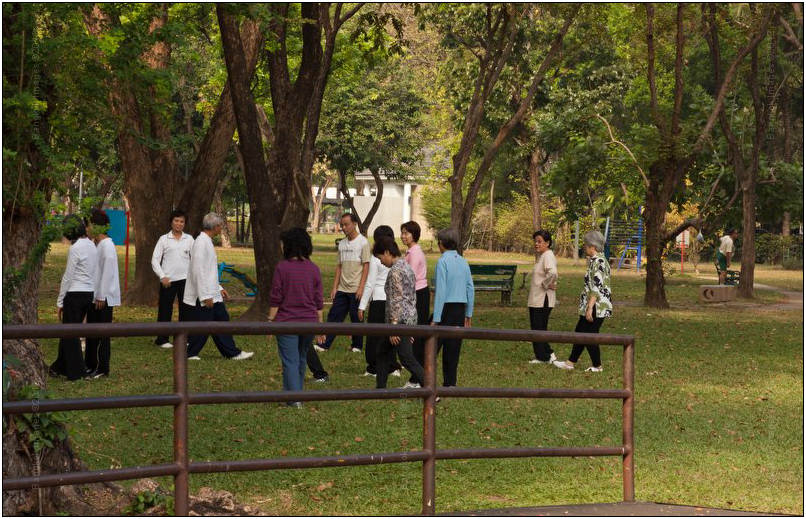
Canon 50D, Canon EF-S15-85mm Lens
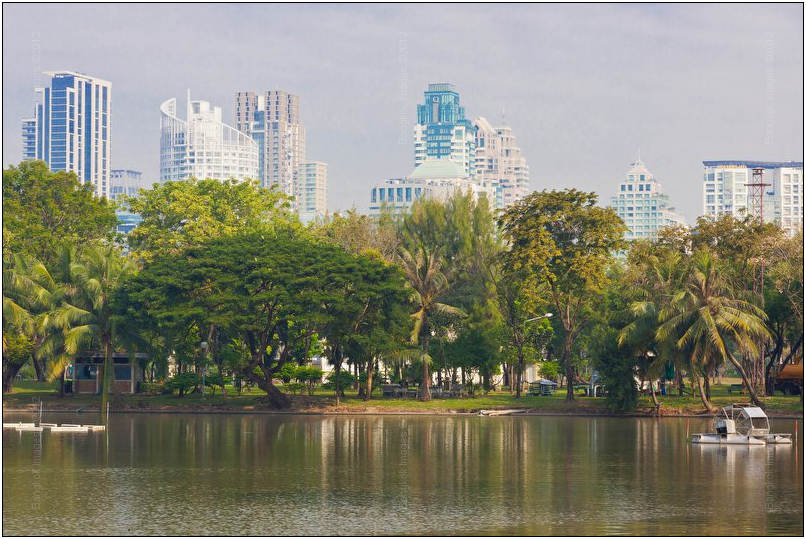
Canon 50D, Canon EF-S15-85mm Lens
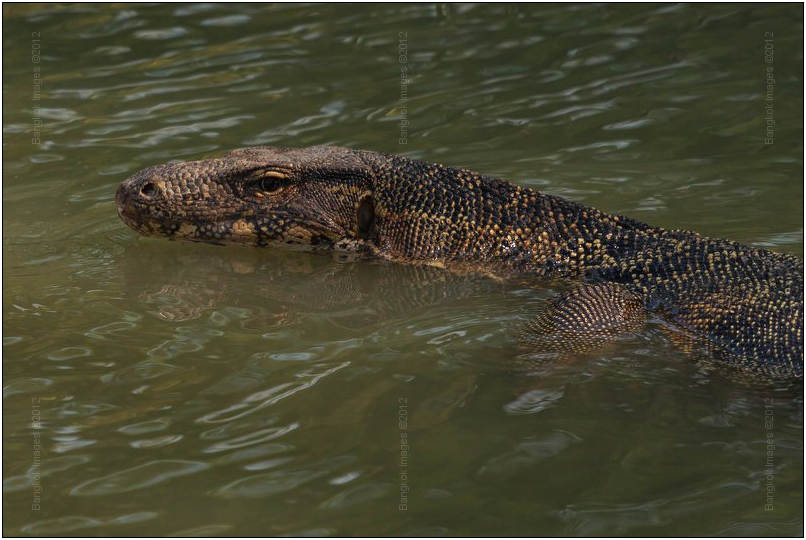
Canon 50D, Canon EF 100-400mm Lens
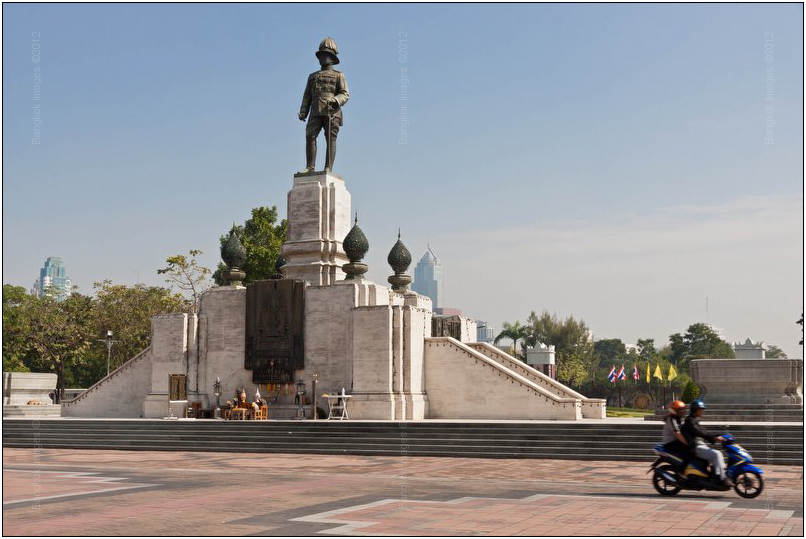
Canon 5D, Canon EF-S15-85mm Lens
The next five images were shot in Lumpini Park, a nice little getaway in the middle of the city. There are kilometer long path ways through the trees and gardens with joggers, cyclists, people weight lifting and others practicing tai
chi. There are also birds, squirrels and lots of big monitor lizards swimming in the lake or lying on the grass.
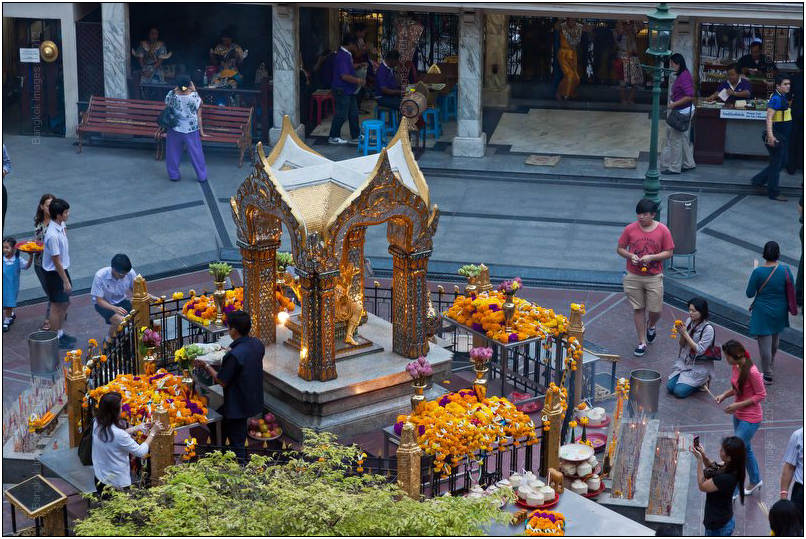
Canon 50D, Canon EF-S15-85mm 1/80 sec at f/5,6 ISO 640
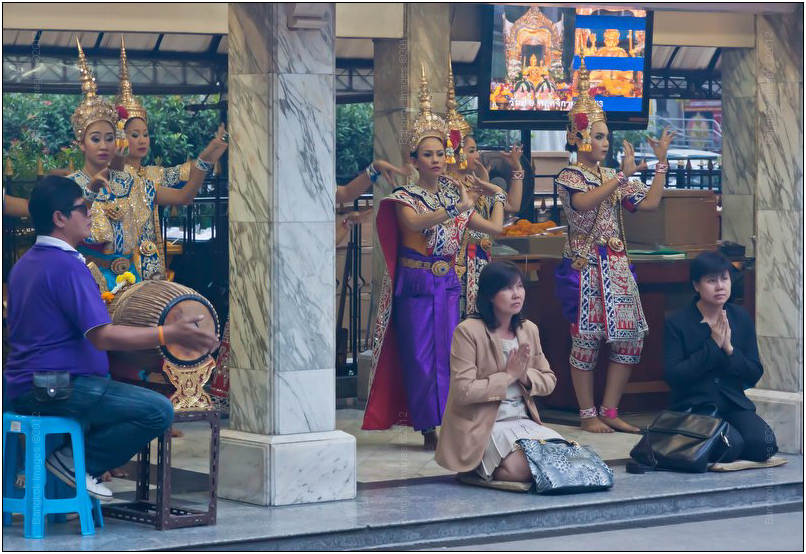
Canon 50D, Canon EF-S15-85mm 1/50 sec at f/5,6 ISO 1600
The Erawan Shrine houses the four faced Brahma god Than Tao Mahaprom. Worshipers arrive early in the morning until midnight here is more going on here than in many of the temples.
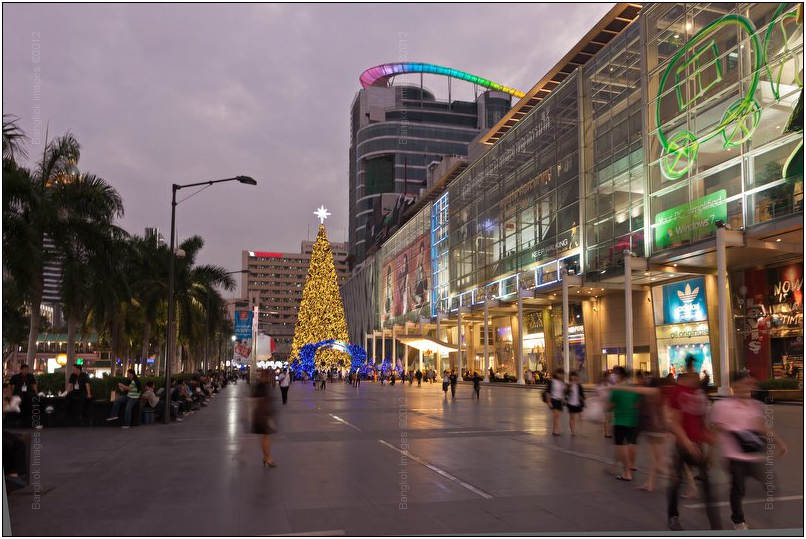
Canon 50D, Canon EF-S15-85mm 0,3 sec at f/5,6 ISO 200
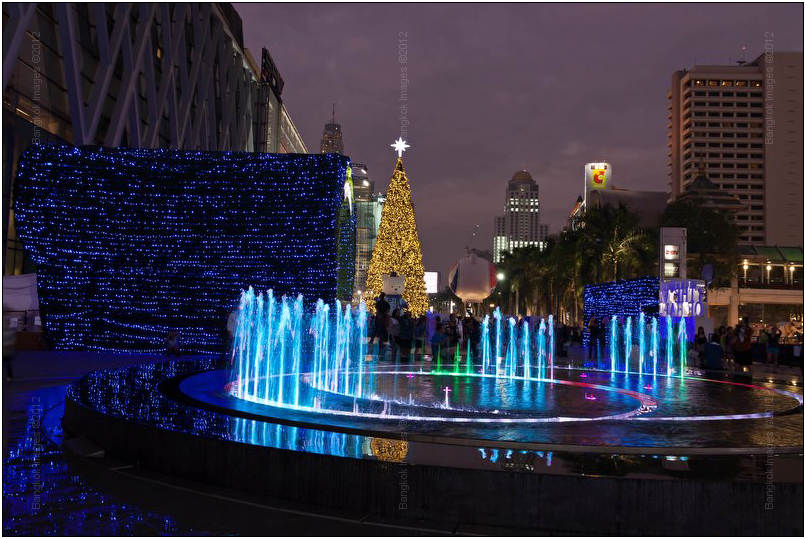
Canon 50D, Canon EF-S15-85mm 1/5 sec at f/5,6 ISO 200
Canon 50D, Canon 50d, Canon EF-S15-85mm 0,3 sec at f/5,6 ISO 200
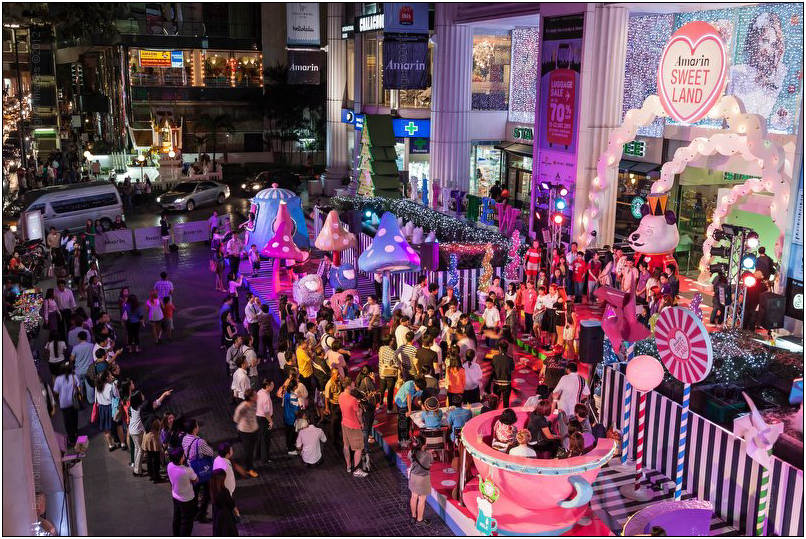
Canon 50D, Canon EF-S15-85mm 1/8 sec at f/5,6 ISO 200
These photos were taken around Siam Square with the camera resting against lamp posts, benches and any solid object that was available because of the slow shutter speeds. The Christmas tree and lights really lit up this area.
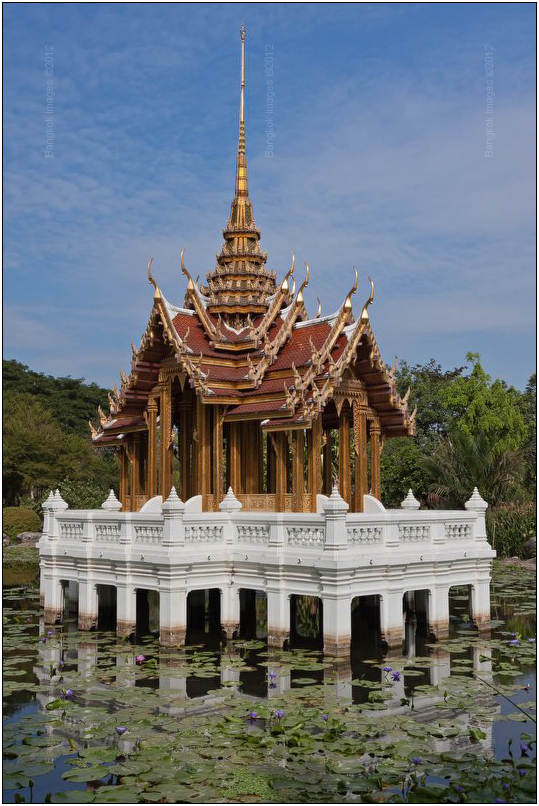
Canon 50D, Canon EF-S15-85mm
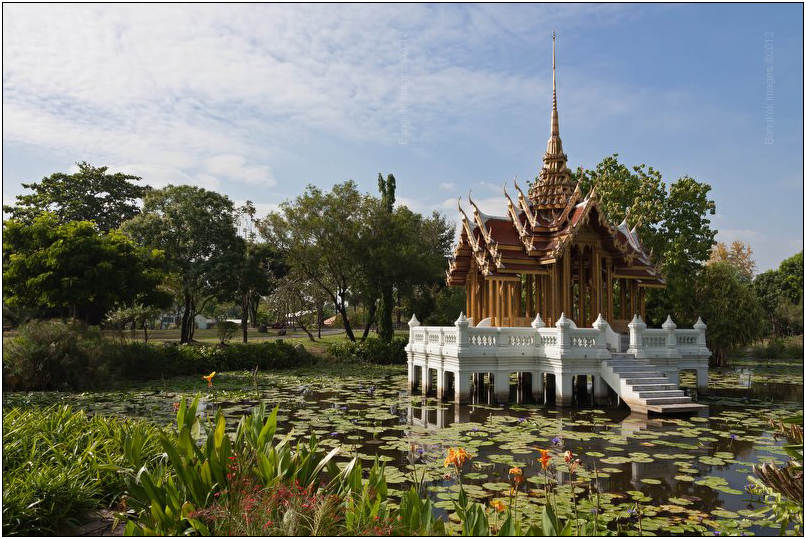
Canon 50D, Canon EF-S15-85mm
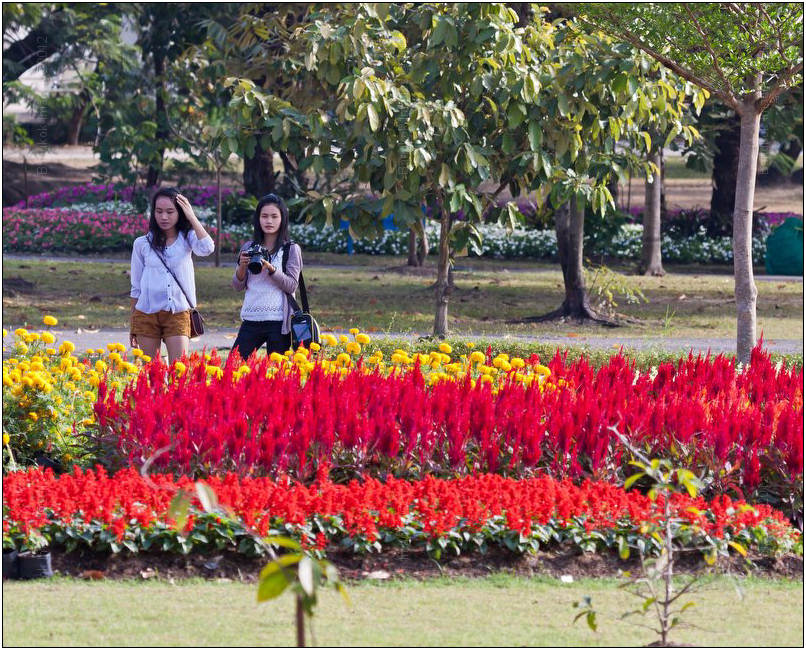
Canon 50D, Canon EF 100-400mm
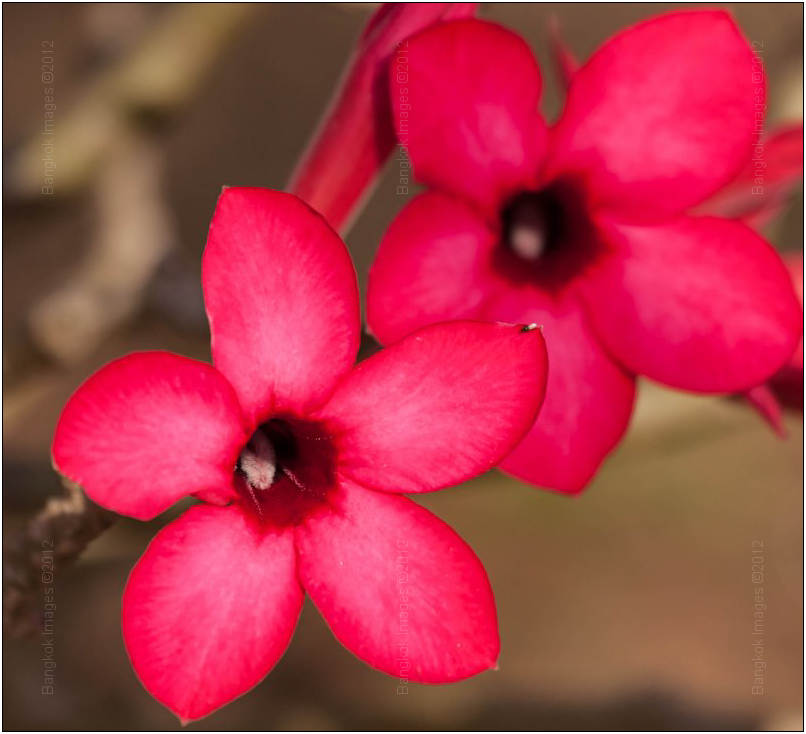
Canon50D Canon EF 100-400mm
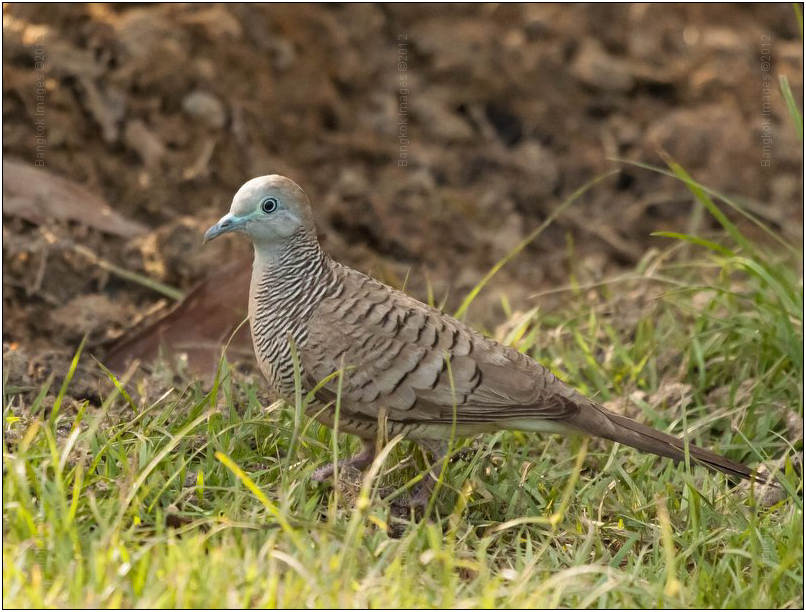
Canon 50D, Canon EF 100-400mm
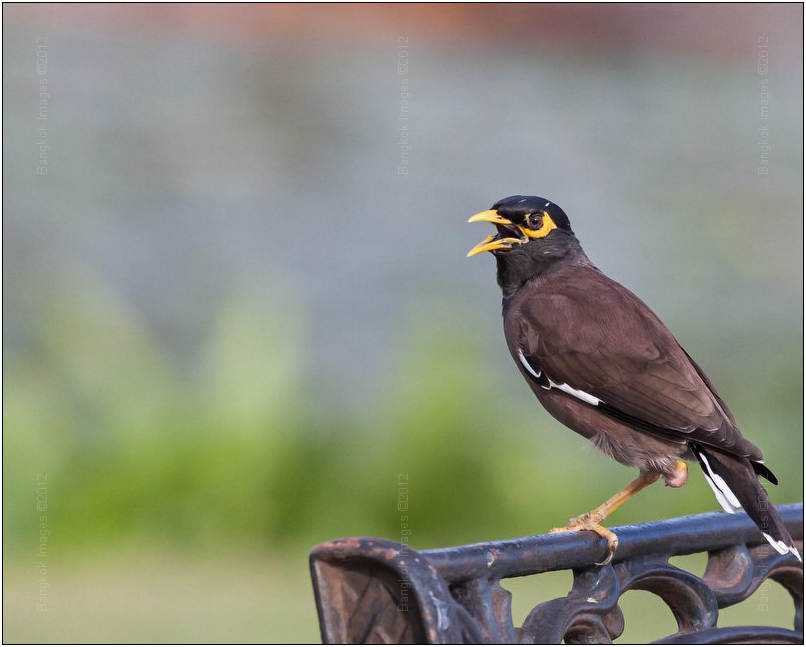
Canon 50D, Canon EF 100-400mm
The last six images were taken in Suan Luang Rama XI (Rama 9 Park). Suan Luang is the largest public park in Bangkok. It's divided into six main areas around a large lake or reservoir. This is a really nice place to spend an afternoon, the air is clean, there are lots of butterflys, flowers and birds, there are many brides and grooms having their wedding photo's taken. The first two shots are of the royal pavilion, the last of a one-legged common myna.
Shoot With A Purpose *menu

Tom Tweedel is a good friend with significant experience in China and has self-published several interesting volumes of his travels in China complete with many great images and informative narrative. Last year he visited Thailand for the first time and
I had a great time showing him around the area. Somehow he found time to put together a like 340 page book of his travels around Thailand and you can get your copy here! I've got a copy of this book and I can tell you it's well worth it, especially for first time travelers or if you haven't seen more of Thailand than downtown Bangkok.
For those whose plans include extended travel in Thailand and China I’d recommend contacting Tom and inquiring into obtaining copies of his books. Tom Tweedel is an Austin, TX based photographer and can be reached at: tomsds@austin.rr.com
Photography has been an ever evolving art for me. It can be a fun end and of itself but as you get older, busier, and hopefully wiser the fact that we all have limits of time an energy becomes more real. To do one thing means to let something else go
undone. When you start thinking about what you “should” be spending your efforts on processing pictures at 2 AM in the morning starts to slip down the list. Trying to reconcile the desire for “photography” with the
limits of reality has sometimes been a challenge that has lead me to a guiding principle “Shoot With a Purpose.”

“Shoot with a Purpose” really is nothing more than asking yourself “Why am I taking this picture?” Before you push the button. Coming up with a good answer may require you to think deeper and learn more than you first thought.
Before taking a shot I try to visualize what I think the shot will look like. But then I have to ask myself “Why am I taking this picture”. More often than not the answer is “Because it is a good picture”. Maybe the lighting
is nice, or the colors brilliant or it has some other attractive element. That’s all fine but what am I going to “Do” with this picture?
Am I going to print it out and hang it on the wall?
Is it going to go on a website?
Will I put it in a digital photo frame?
Am I going to sell it to someone?
Am I going to enter it in a contest?
Do I already have better pictures of this?
Do I really need a picture of this?
Can I learn something from this picture?
In short
How is my life going to be better for the effort required to take, review, process and store this picture?

If I don’t have a good answer to these questions often times I don’t take the picture and move on to something else . I defer to the ancient wisdom of the Japanese swordsman Miyamoto Musashi “Do nothing which is of no use”.
It may seem simple but it goes much deeper.
I once had a student who I was instructing on the basics of photography. He had “achieved” the objective of the assignment. He had taken hundreds upon hundreds of pictures (easy to do with DSLRs). His problem was that because he perceived
digital as being “free” he just snapped away hoping for success without putting thought into why one picture was better than another or understanding into why some pictures achieved the goal while others did not.

It got me thinking about another bit of ancient eastern wisdom from Sun Tzu which goes something like:
If you know your enemy and know yourself you win every battle you choose to fight.
If you know your enemy but not yourself for every victory you will suffer a loss.
If you know neither the enemy nor yourself you will loose every time.
And
Those who enter into battle first and look for victory afterward will probably lose.
Thinking about those passages (and those are very loose translations) I couldn’t help but think about how it applied to my student. He snapped away without really knowing what he was looking for or how to get it. By sheer numbers he succeeded,
but only through and overabundance of resources (time and effort). We all begin there I suppose, but the question is are you happy there or do you want to get better?

Chances are that you could stand to learn more about some aspect of photography, be it shooting under certain conditions or the limits of your equipment or skill (knowing your enemy and knowing yourself). Take the shot anyway, but afterwards be sure to
follow up on it in a timely fashion to learn what you can. Then the next time you ask yourself the question you’ll have a better answer.

Photography News of Interest *menu
True Romance: Photo of couple kissing as they are led away by police
. Mo Gelbers “Last Kiss” could be the basis for a film. Mo Gelbers an amateur photographer is a finalist in the Project Imagination” contest sponsored by film maker Ron Howard.

Curiosity Rover Explores Mars. There are some really fascinating images in this gallery.



19yo Captures Stunning Images of Earth From Space using Homemade Space Craft. Bored and need something to do this weekend? Then build a spacecraft launch your Canon A570 into space and share the pics on your social networking site of choice.

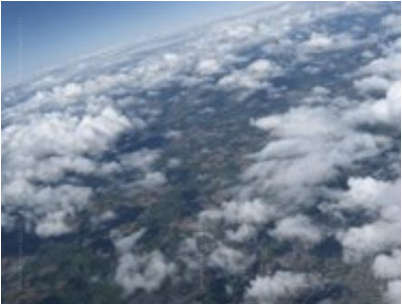
Stunning Art Mimics Reality
.
German Artist Dirk Dzimirsky makes these images using a pencil, paper, and lots of talent. Incredible!
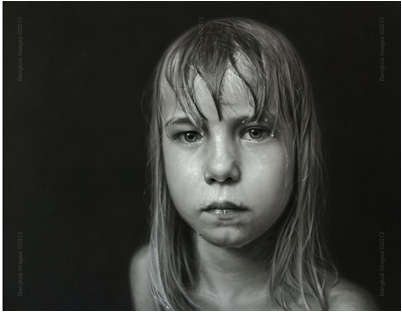
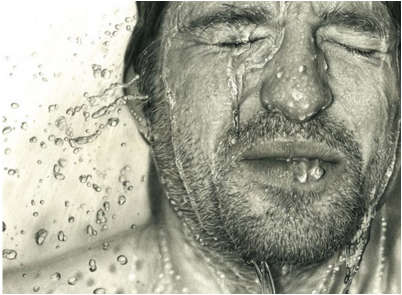
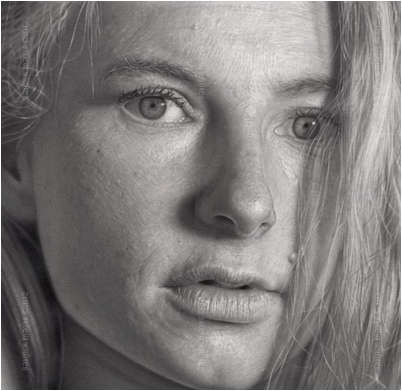
Readers Submissions *menu
Hi Steve,
Interesting article. Do I myself have „The eye“? No, I’d say, generally not. I’d say that I have too little of an artist, and too much of a technical person, in me for that. But, as you say, while I don’t have it natively, I believe that 35 years of practice and general interest in the subject, including reading quite a few books, have taught me something. Early-youth experience as detailed below might also have helped me.
When surfing the internet, I sometimes come across proud statements like„ I just got this new camera last weekend and I’ve already taken 2000 pictures“. And I scratch my head in wonder and think: In what kind of place have you been to find 2000 interesting shots in just 3 days? And what will you be doing with your 2000 pictures? Will you ever be looking at them again? I mean, let’s assume that you only spend 30 seconds for each photo – really not a lot of time for looking at something that’s worthwhile looking at – you will already need more than 16 hours for your 2000 pictures.
I think that maybe it’s a generational issue. I got my first camera (a Kodak Instamatic) when I was 10 years old, and my first fully mechanical SLR a year later. Back then, film and printing was expensive. In absolute terms, 35 years ago, taking pictures was much more expensive than today. In today’s dollars, it was hugely more expensive. Seen through a kid’s eyes who got just a few spare dollars every month, it was absolutely-and-over-the-top-ridiculously expensive.
So I was conditioned to look carefully, then look again even more carefully, before pushing the button. I might have come back from a vacation with not even 2 rolls of film shot.
Someone who got his first camera in the digital age has never felt the financial sting of taking too many pictures and therefore might be more prone to snap away more happily, and with less thinking, than an old-timer like myself. It might also have to do with a generally more consumerist attitude, but I realize that I’m beginning to sound moralizing and old so I won’t continue…
Having grown up, having a well-paid job and, consequently, having more money to spend on something as non-essential as photography, when going on a trip and wondering how many rolls of film to carry, my rule of thumb has always been “one roll for every day you are likely to use your camera”. This rule has worked well for me. 2008 was the last time that I used my analog camera during a vacation. My father and I spent 2 weeks in Brazil, visiting Manaus and traveling the Amazon. I came home with a little over 400 pictures. One roll per day. Of those, I selected 140 to show them to friends who also wanted to go there.
Now what’s interesting, is that I haven’t changed this rate since switching to digital photography. “One roll of film per day” still works for me. 4 weeks in the Philippines in 2009 – you remember – gave me 1060 pictures. 6 weeks in Taiwan last year resulted in 1117 pictures. And two weeks in Poland this year added just 328 images to my hard drive. I only end up taking more pictures than before because my digital camera is smaller and more lightweight than my SLR, so I have it with me more frequently. Still, my overall number of pictures taken is not more than about 2000 per year.
Now how many of those are “keepers”?
I have two measures to answer this question. I have created a web gallery (only for my personal enjoyment on my machine, not published in the internet) with pictures that I consider “good”. “Good” defined as: I assume that someone else, who has not been there and does not have any special interest in myself and my pictures, might want to see them. Out of very roughly 8000 digital pictures I’ve taken so far, this gallery contains 760. I.e., slightly less than 10% of my picture I myself call “good”.
My second measure: Because of the low resolution of the monitors available today, looking at photos on-screen is not much fun. So, ironically, since switching to digital, I print many more pictures that I did in the analog world. Well, I don’t actually “print” them; I create photo books. So far, 11 of them. Inevitably, because these books do not only contain “good” pictures but also some in whom I or my wife have a personal interest, the number of pictures used for them is larger than in my web gallery. Roughly counted, there are 1100 pictures in my photo books, or 15% of the total. Or, to give a concrete example, of the 1117 pictures I took in Taiwan last year, 118 ended up in the web gallery and 280 made it into the photo books. Because we spent much time with my wife’s family it is not surprising that the share of “personal interest” pictures is relatively large here.
I believe that my share of “good” pictures might be larger if I went on explicit photography excursions. But I don’t; I just occasionally carry my camera when I go someplace. So I often end up finding the poorest light imaginable. Last weekend, I went hiking a bit through the vineyard terraces of the Lavaux region, along the southern shore of Lake Geneva. Early to mid afternoon, bright sun. None of the 27 pictures I took (again, “one roll of film per day” applies) made it to my gallery. Just because it’s a beautiful area, I’ve attached a few nonetheless.
Best regards,
Tom






Tom –
I really enjoyed reading your email and plan to share it in the next column in the Readers Submissions area. I agree with most everything you said. In fact, your email inspired my opening piece this week “Purpose Of A Viewfinder .” I’m sure you’ll understand the link.
Steve
I’d like to mention that everyone, myself included, is really enjoying the current trend of readers submissions. Everyone loves them, but remember we can really use more. I have only another week’s worth in my queue, so please take the time to put together a few images and words if you can and send them in. Thank you. info@BangkokImages.com
Readers Questions *menu
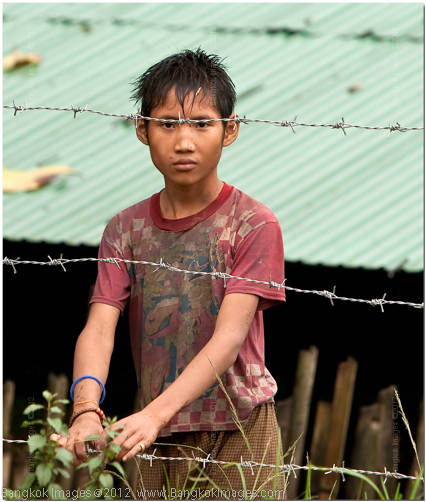
Hi Steve!
I was just going thru your amazing images, and guess you may be the one to best advise on how to get to
the Mae La camp.
I have a friend there and would like to see him and his new family.
Any advice would be much appreciated.
Also what kind of things do they need? Medicines, reading glasses etc ?
Peace,
Kevin.
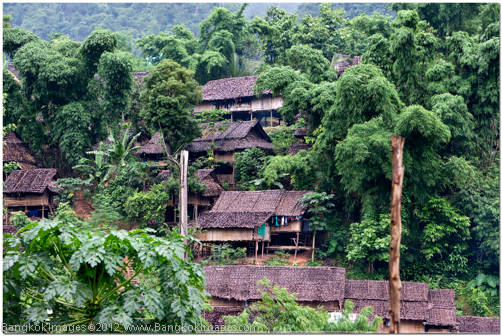
Kevin –
I’m assuming you won’t have your own car? There is a small air strip which isn’t open on any regular basis.. so you’ll be driving in. I will tell you the roads are steep and fraught with accident after accident as you come
off the main 1 highway and head towards Mae Sot. For this reason you’ll want to hire a car/driver with a nearly new condition vehicle, or one of the bigger more expensive bus rides. I can’t count the number of accidents I’ve
seen from poor weather, poor driving habits, and poor vehicle condition.
Mae Sot is where you’ll stay, eat, shop, etc.. it’s at the head of the road to Mae La and the other camps. You’re looking at a 2-3 hour drive from Mae Sot to Mae La, more if you get yourself stuck on local transportation like the
truck with seats in the back.. Rain and other weather can double the time it takes.
Very few foreigners stay at the camps overnight on any regular basis, so your friend is probably staying in Mae Sot as well.
What do they need.. A country? They need everything from protein to stay alive to fresh fruit to offset scurvy.. The UN diet they’re on you’ll soon learn is pathetic. I would recommend seeing/learning the scope of the problem and then deciding
how you’d like to help. Mae la will be overwhelming..
Good on you for going up there. I hope you’ll find it as rewarding as I have.
Steve
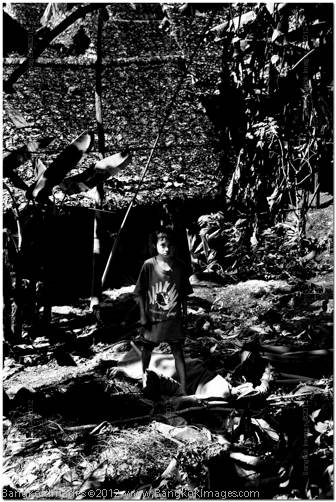
Some Useful Links To Learn About Mae Sot, Mae La Refugee Camp, and more:
Mae La Refugee Camp Thailand
Mae Sot, Thai Burma Friendship Bridge
No Place To Call Home
Revisted Mae La Refugee Camps
Mae La Still Haunts Me
Please submit your questions to info@BangkokImages.com All questions will be answered and most will show up in the weekly column.
A Snapshot of Bangkok Images Month in Review *menu

The last month of the summer was eventful locally with more work on websites for local clients and a trip to Nashville Tennesse for a couple weddings and a bit of exploration in the area. All in all I really enjoyed the greater Nashville area and will
be going back soon for some more targeted information gathering. With it's rolling hills of green grass, white horse fenses, horse barns, and a charming downtown area with more honkytonks than you could hope for there is a lot to attract
its population. Nashville is just far enough south where it becomes "optional" for the local ladies to take on a southern drawl in their early years, but not so far south where it's expected. Perfect!
When we started out this last month local temperatures were hitting daily highs in excess of 100F with humidity hovering around 80-85%. As we closed out September we took that sudden sharp fall into Autumn with daily highs in the upper 60's and nights
in the mid-30's. By next month I wouldn't be surprised if we've been blessed with an early snow.
I hope to get out locally this weekend for some fall images. My youngest son and I have a suspension upgrade to install in the Cobra Mustang before our last Autocross competition of the year and then we'll head out with our cameras and see what we
missed last year.
I haven't made up my mind if I'll be back in January for 30 days or workshops, or if I'll wait until June like this year. If you have any requests in this area give me some feedback. Until then we could use some readers submissions, readers
questions, and if anyone would like to work u an article I'm here ot help.
Infocus Blog, Thailand Photo Stories by Dana *menu
A PICTURE OF ME
Fuji x100 @F8 1/20th ISO 3200
I have a friend named Fa. I'd like to say that I have a girlfriend named Fa, but I don't get a lot of feedback in the 'girlfriend' category from her. Love should be a two way street. At least that's what I think. Anyway, I am
head-over-heels crazy, nutso, goofy about Fa. I just think she is fantastic and wonderful in every way.
We have been dating and spending time together for years, but sometimes I get the feeling that we are kind of stuck in a rut. I just can't seem to get us to the next relationship level. You know, a measure of adult intimacy where she might turn to
me one day and ask me my opinion about something. Anything.
So I came up with a plan. Maybe you have done this yourself, or you know someone who has done this. I bought a camera. A 35mm camera first, then after that there was a Polaroid Land Camera, and a couple of those Instamatic cameras. But you don't
need all that detail. The point is, I bought a camera. Why? Well, I figured that if taking pictures and doing camera things was a part of our relationship it might help us get to the next relationship level.
So, pictures were taken. I took pictures of Fa. I made her take pictures of me. I asked people to take pictures of us as a couple. I bought a scrapbook and filled it with pictures of us. I had some pictures made bigger and framed them. I gave some framed
pictures to her. I even had a beautiful picture of her beautiful face laminated onto one of my T-shirts.
Result? Not much. I still have to prime the relationship pump when we are together; I have to start the sentences, make the smiles, and act out the enthusiasms. She has never once said that she would like a picture of me. Or us. A camera is a trickster,
a magic act; it converts three dimensional reality into two dimensional reality. You can hold altered reality in your hands, you can freeze time, you can catalogue memories.
But a camera is no substitute for emotions. It can't make someone love you. Fa and I still spend time together but I rarely bring the camera anymore. I thought the camera would be a good relationship idea but I was mistaken. I thought it would somehow
change things. My mistake. You can't change people, all you can do is decide whether to love them or not. And furthermore . . . oops, I see Fa: gotta go.




